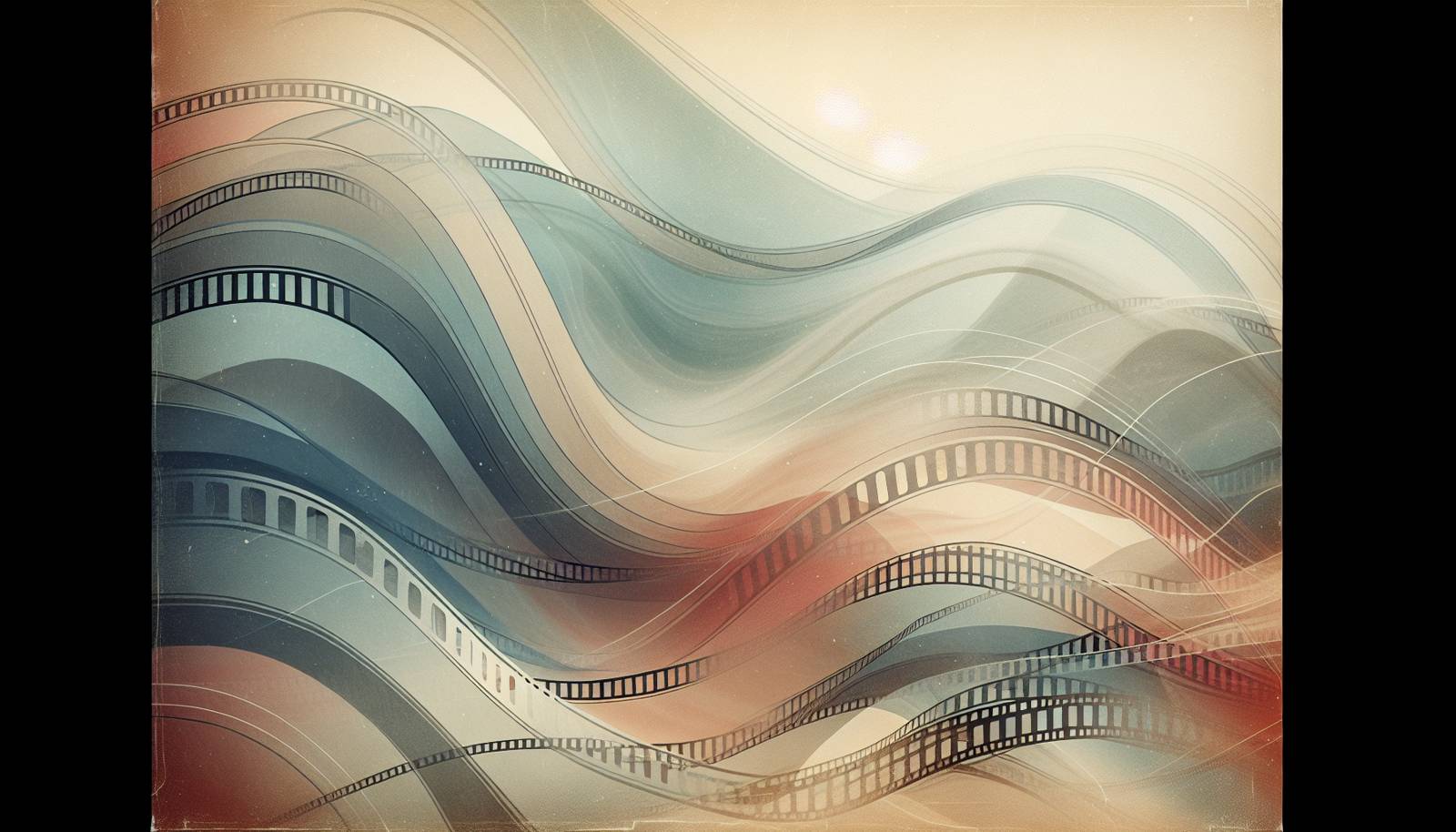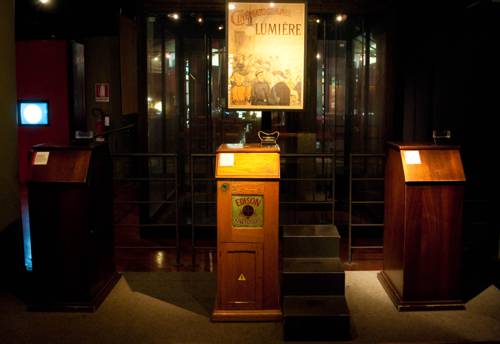
FAQ About The Evolution of Neo-Realism in Global Cinema

What is Neo-Realism in cinema?
Neo-Realism is a film movement that originated in Italy during the 1940s, profoundly influencing movies worldwide. It emphasizes storylines set amongst the poor and working-class, filmed on location, often using non-professional actors. The movement focuses on candid portrayal and realistic narratives to reflect societal issues.

Who are the major figures associated with Italian Neo-Realism?
Major figures in Italian Neo-Realism include directors such as Roberto Rossellini, Vittorio De Sica, and Luchino Visconti. Their films 'Roma, Open City', 'Bicycle Thieves', and 'La Terra Trema' respectively, are some of the most significant works that embody Neo-Realist principles.

What themes are commonly explored in Neo-Realist films?
Neo-Realist films commonly explore themes such as poverty, oppression, injustice, and the human struggle against socio-economic hardships. These movies often highlight the effects of World War II on individuals and communities, focusing on everyday realities and experiences.

How did Neo-Realism influence global cinema?
Neo-Realism influenced global cinema by inspiring filmmakers worldwide to adopt a more realistic approach to storytelling. Its emphasis on social issues, authentic experiences, and non-professional actors resonated with many and can be seen in movements like the French New Wave, British New Cinema, and Dogme 95.

What characterized the filmmaking techniques in Neo-Realism?
Filmmaking techniques in Neo-Realism are characterized by a stark, realistic style, often employing on-location shooting, natural lighting, and minimalistic sets. The use of long takes, simple editing, and a focus on narrative over spectacle also define the style, aiming to create an immersive and authentic viewing experience.

How did Neo-Realism begin and develop?
Neo-Realism began in post-World War II Italy as a response to the Fascist regime's control over the film industry. With resources limited, filmmakers turned to real locations, stories, and people to depict the harsh realities faced by many Italians during the war's aftermath. It developed as directors combined these authentic narratives with a focus on humanism and a critical look at societal structures.

What role did the socio-political climate play in shaping Neo-Realism?
The socio-political climate of post-war Italy was crucial in shaping Neo-Realism. The destruction and economic hardship experienced by many Italians were starkly different from the glossy, propagandistic films produced during Mussolini's rule. Neo-Realism sought to portray the genuine struggles and resilience of everyday people amid societal upheaval.

Are there any modern films or filmmakers influenced by Neo-Realism?
Contemporary filmmakers influenced by Neo-Realism include the Dardenne brothers, Ken Loach, and Richard Linklater, who have carried forward aspects of the movement in their storytelling. Films like 'The Kid with a Bike' and 'Boyhood' reflect Neo-Realist themes through their focus on realism, everyday life, and social issues.

What is the difference between Neo-Realism and previous film movements?
The key difference between Neo-Realism and preceding film movements is its focus on authentic depiction and social issues rather than escapism or entertainment. Unlike the studio-bound productions that emphasized glamour, Neo-Realism brought raw, real-world stories to the forefront, capturing the lives and struggles of ordinary people.

How did Neo-Realism impact the portrayal of characters in cinema?
Neo-Realism impacted the portrayal of characters by shifting the focus to ordinary people rather than idealized protagonists commonly seen in Hollywood films. Characters in Neo-Realist films are deeply human, often portrayed with flaws and struggles that represent broader social and economic themes, enhancing relatability and empathy.

What are some iconic films of the Neo-Realist movement?
Iconic films of the Neo-Realist movement include 'Bicycle Thieves' (1948) by Vittorio De Sica, 'Roma, Open City' (1945) by Roberto Rossellini, and 'The Earth Trembles' (1948) by Luchino Visconti. These films exemplify the movement's principles of realistic storytelling, use of non-professional actors, and focus on societal issues.

Did Neo-Realism face any criticism or backlash during its time?
Yes, Neo-Realism did face criticism and backlash, particularly from those who preferred the more stylized, escapist cinema of the past. Some critics found the movement's focus on bleak realities and socio-economic issues to be overly grim or pessimistic. Despite this, many celebrated its authenticity and innovation.

How do Neo-Realist films differ in narrative structure compared to other films?
Neo-Realist films often follow a more unstructured, episodic narrative, focusing on the everyday experiences and struggles of their characters. This approach contrasts with the more traditional, linear storytelling in conventional cinema, allowing for a nuanced exploration of themes and a deeper immersion into the characters' lives.

What has been the global impact of Neo-Realism, especially outside Italy?
The global impact of Neo-Realism extends far beyond Italy, influencing filmmakers worldwide to incorporate realistic elements, socio-political commentary, and a focus on ordinary lives into their work. Movements such as the French New Wave, Indian Parallel Cinema, and Iranian New Wave have roots in Neo-Realist principles.

How are socio-economic issues depicted in Neo-Realism distinct from other styles?
In Neo-Realism, socio-economic issues are depicted with a profound sense of realism and empathy, focusing on the lived experiences of individuals within their communities. This differs from other styles which may depict such issues in a more dramatized or symbolic manner, rather than the grounded, observational approach of Neo-Realism.

What filming techniques did Neo-Realist directors prefer?
Neo-Realist directors preferred filming techniques that embraced authenticity, including shooting on location, using natural light, and employing non-professional actors. These techniques helped create a raw, immersive atmosphere that underscored the socio-political themes of their narratives.

Why did Neo-Realism emerge specifically in Italy?
Neo-Realism emerged in Italy as a reaction to the social and economic conditions following World War II, coupled with the desire to break away from Fascist-era representations. There was an urgent need to depict the harsh realities faced by the common people, which catalyzed filmmakers to pursue a truthful storytelling approach.

What were some challenges faced by Neo-Realist filmmakers?
Neo-Realist filmmakers faced many challenges, including budgetary constraints, political pressures, and finding distribution for their films. They often had to work with limited resources and face criticism for their unflinching portrayals of hardship and misery, which some audiences found difficult to confront.

How did audiences initially react to Neo-Realist films?
Initial reactions to Neo-Realist films were mixed; while some hailed them for their authenticity and social commentary, others were taken aback by their raw realism, preferring the escapism of mainstream cinema. Over time, however, Neo-Realism gained recognition and appreciation for its innovative storytelling techniques.

Is there a connection between Neo-Realism and documentary filmmaking?
Yes, there is a strong connection between Neo-Realism and documentary filmmaking. The use of non-professional actors, on-location shooting, and a focus on real-life situations lend a documentary-like authenticity to Neo-Realist films, blurring the lines between staged and factual storytelling.
